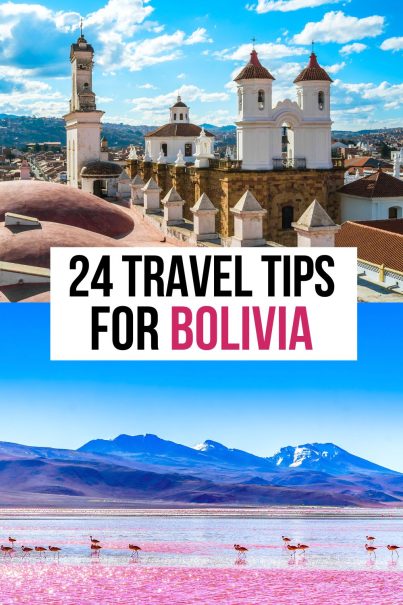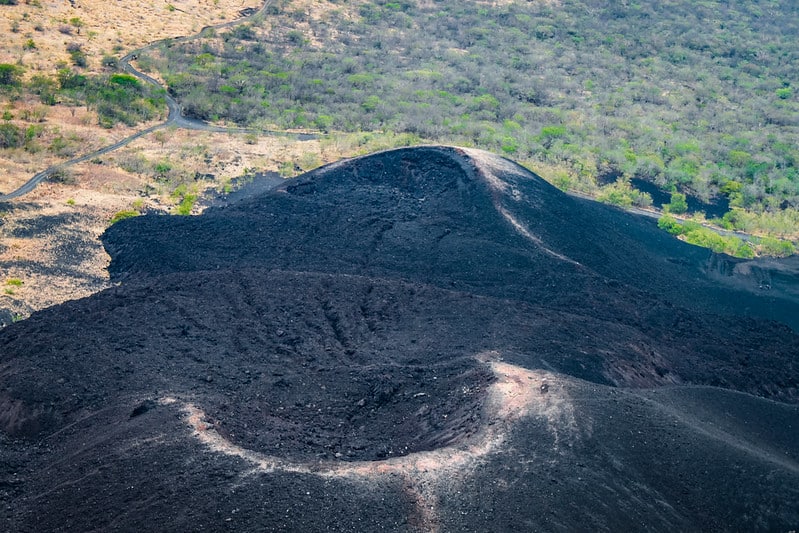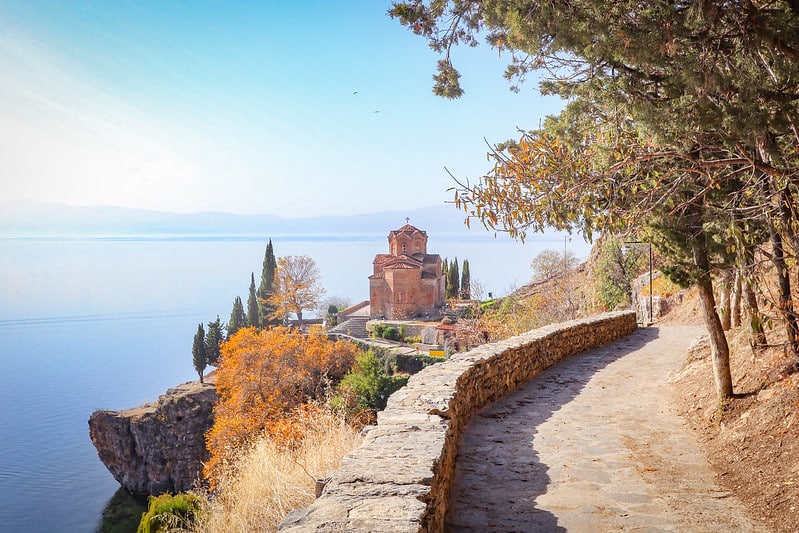24 Bolivia travel tips (to make visiting Bolivia easier!)
Bolivia is one of the most beautiful countries in the world, and I loved visiting.
With scenery diversing from lush jungle to snow-capped mountains and lunar landscapes, this fairly unexplored country has a lot to offer both nature-wise and culturally.
Although the Roman Catholic Church has a dominant place in Bolivia, it is the most indigenous country in Latin America, with 60 % of its population being of pure Native American ancestry. You will find a great variety of local folklore, religion and customs.
This post contains referral links for products I love. Adventurous Miriam earns a small commission at no extra cost to you if you purchase through my links. I appreciate your support ♡ Learn more
Bolivia travel tips and info
I had an amazing time in Bolivia, but there were a bunch of things I wish I’d known before landing.
That’s exactly why I put together this post—to pass on those handy tips and facts to you.
This post will cover everything you need to know, from planning your Bolivia vacation to the must-do experiences once you’re there.
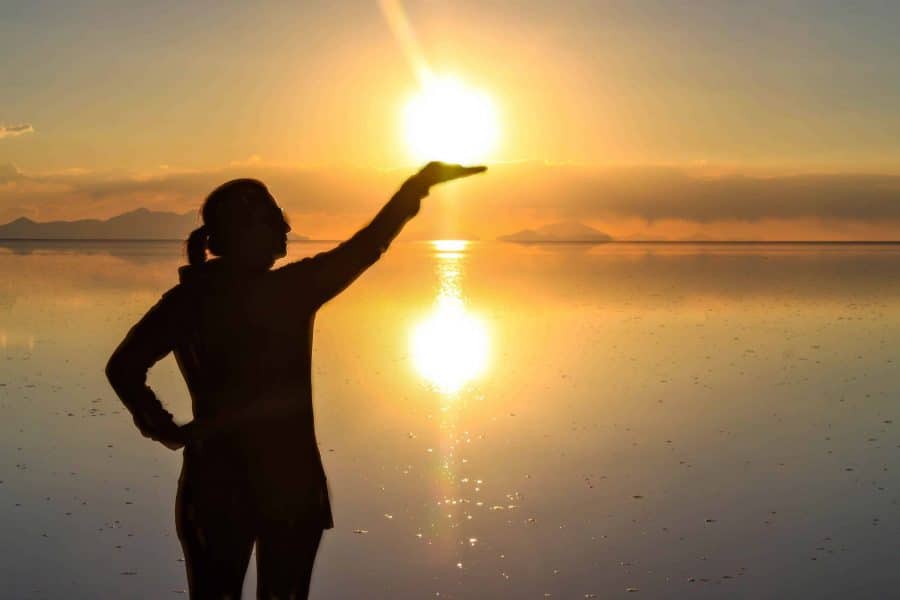
How to get around Bolivia
By bus
Traveling around Bolivia by bus is generally straightforward.
Some buses might be on the older side, they’ll get you where you need to go. For longer trips, overnight buses are more comfortable, though they’re pricier.
Personally, I’m pretty adventurous but I’d avoid taking an overnight bus due to road safety concerns and the risk of encountering drunk drivers.
In most Bolivian cities, you’ll use the bus terminals to catch your ride. They usually have information desks, and you should buy your tickets there a day or two in advance.
By plane
For those longer trips across Bolivia, I’d personally choose to fly when I can. It’s pricier, sure, but it saves a ton of time.
The main airline you’ll be looking at is Boliviana de Aviación (BOA), which is state-owned and reliable.
Amaszonas, another airline, got hit hard by the pandemic and now only flies to a few places in the Bolivian Amazon from La Paz, Cochabamba, and Santa Cruz.
I’ve flown with BOA between La Paz and Uyuni and it was a good experience.
Take a tour of Bolivia
One of the best ways to explore Bolivia is on a tour.
There are plenty of tours that can accommodate all needs in Bolivia. They will arrange transportation and ensure that you are able to get the best experience. The tours are also pretty affordable.
I took tours to the Death Road and Uyuni when I was there and they were absolutely fantastic and professional.
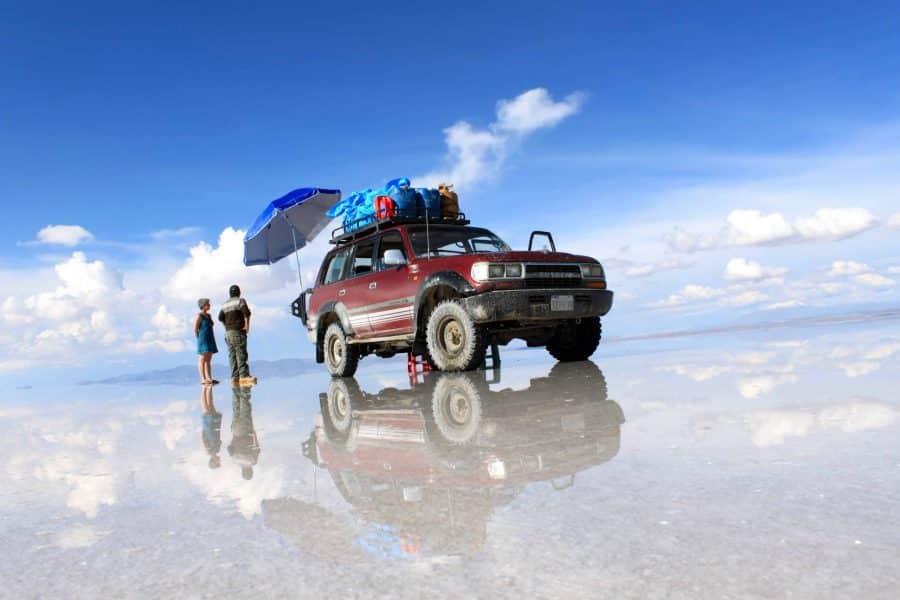
The best things to do in Bolivia
Death Road
Death Road is a 64 km mostly downhill twisty road, visited by thousands of thrill-seekers every year.
Biking down Death Road costs maximum 800 Bolivianos, but for your own safety, don’t skimp on your agency! I recommend going with Gravity.
The Witches Market in La Paz
The Witches Market is a cultural market in the old part of La Paz, run by witch doctors and famous for selling dried llama fetuses. I highly recommend visiting for the cultural experience.
Valle de la Luna
Valle de la Luna is only 10 km south of La Paz. This odd lunar landscape has been created over the centuries by wind and weather. It’s a beautiful sight and easy to visit on a half-day tour from the capital.
Potosi
Potosi is a smaller town in the Southern Bolivia, known for the silver mining. Go here for the history.
Amazon Rain Forest
Amazon Rain Forest is a must on any South America itinery. Plus, it’s not as crowded when you visit in Bolivia (as opposed to Brazil).
You can opt for a Pampas tour for seeing wildlife or visit the jungle for activities.
Uyuni Salt Flats
Uyuni Salt Flats are the world’s largest salt flats and home to flamingos, volcanos and diverse, breathtaking nature. This was the highlight of my Bolivia trip!

The best time to visit Bolivia
The best time to visit Bolivia is during winter from April to October.
It’s mostly dry and the skies are blue, but it will be very cold, dropping to many degrees below freezing at night.
The summer/rainy season from November to March can cause landslides and transport problems in the highlands, while the eastern lowlands are warm year-round.
Do you need a visa?
Americans need a tourist visa to enter Bolivia and all nationalities need a yellow fever card. Travelers from other countries have different requirements so make sure to check with your local embassy.
Safety in Bolivia
In general, Bolivia is a safe country to travel in. What you need to pay extra attention to is choosing the right travel company.
Especially in Uyuni you should look for a reputable company such as: Quechua Connections, Red Planet or Cordillera Traveller to avoid drunk drivers or getting a poor experience.
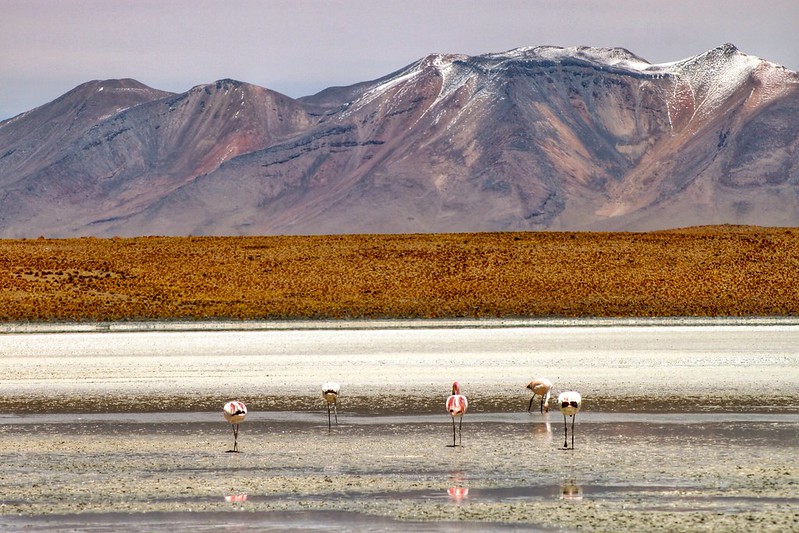
Random facts to know before you visit Bolivia
Bolivia has two capital cities
Bolivia is unusual because it has two capitals. Sucre is the official one, with historical significance as the site of the country’s founding documents.
La Paz is where the government does its work, sitting high up at 3,650 meters, making it the highest administrative capital in the world.
The Salar de Uyuni is the world’s largest salt flat
The Salar de Uyuni is massive, easily the biggest salt flat you’ll find anywhere, covering over 10,000 square kilometers.
It’s packed with lithium, crucial for making batteries, and Bolivia has about 70% of the planet’s lithium. When you visit, you’ll see it’s like nothing else you’ve ever seen.
Bolivia is home to the highest navigable lake in the world
Lake Titicaca is not only the highest lake that boats can travel on at 3,812 meters, but it’s also a place full of history.
It’s said to be the birthplace of the Inca Empire.
The lake is a calm place where you can take boat tours and visit the local communities. The lake also holds the ruins of an ancient underwater city believed to date back to pre-Inca times.
The country has 37 official languages
In Bolivia, you’ve got 37 official languages!
From Spanish to indigenous tongues like Quechua and Aymara, it’s a place where cultural preservation is taken seriously.
Bolivia has a Death Road
And then there’s the Death Road – it’s got a scary name for a reason. Officially known as the North Yungas Road, this route is notorious for its narrow lanes and steep drops.
Today, it’s also a magnet for daredevils like yours truly looking to bike down it.

Cost of a trip to Bolivia
Living expenses in Bolivia are quite cheep, so it’ll be the domestic flights and tours that “blows” your budget.
Expect to spend between $25 and $50 per day.
How to save money
Bargain – but know when
In supermarkets and stores that have price tags on their items you cannot bargain the price down. But in most open markets it’s a mistake not to.
Vendors automatically increase the price as soon as they see you are foreign, so never pay full price.
Buy supplies at the local markets
You can buy vegetables, fruit, bread, cookies, sodas, snacks and much more at the local markets. In La Paz there are plenty of cheap sports equipment and clothing for sale, too.
Walk or take public transportation
Although most buses are in poor shape, it remains the cheap alternative to taxis or flights. Just make sure to look for a well-known company.
You don’t need a guide everywhere
While going to Death Road and Uyuni requires a guide, a trip to Valle de la Luna is easily explored alone.
Practice your Spanish
If you speak the language, taxi drivers and local vendors are more likely to expect you to bargain – and thus give you a fair price.
More posts from Bolivia you might like
- Biking down Bolivia’s Death Road – the world’s most dangerous road
- Witches Market in La Paz: A look into Bolivia’s soul
- Bolivia’s Valle de la Luna: A Trip to the Moon
- Packing list for Bolivia
- 3 days in Salar de Uyuni: The Ultimate Guide
Save it!
